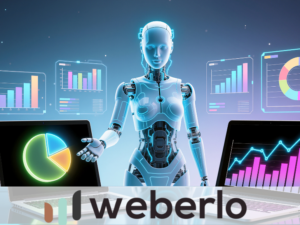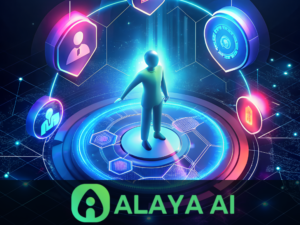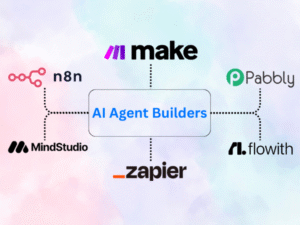Artificial Intelligence (AI) is transforming industries worldwide by solving complex problems efficiently. However, as Problem Reduction Techniques in AI are so complex now, so are the challenges in ensuring their accuracy and effectiveness. Problem reduction techniques in AI play a crucial role in making AI systems more reliable, robust, and applicable to real-world situations. This blog will guide you through the basics of problem reduction in AI, the “transform and conquer” approach, and key problem-solving techniques, concluding with a glimpse into the future of AI in healthcare.
Understanding Problem Reduction in AI
Problem reduction is a method in AI where complex problems are broken down into simpler, more manageable sub-problems. Instead of attempting to solve the entire problem at once, AI systems can handle smaller pieces that are easier to resolve, eventually combining these solutions to address the larger issue.
This method mirrors how humans often tackle complicated tasks: by breaking them down step by step. For example, if you’re faced with writing a research paper, you might first focus on collecting sources, then creating an outline, writing the introduction, and so on. Similarly, AI systems can apply problem reduction to enhance decision-making, optimization, and data analysis.

Common Problem Reduction Techniques in AI
1. Divide and Conquer: One of the most popular Problem Reduction Techniques in AI, “divide and conquer,” involves splitting a problem into independent sub-problems. The solution to each smaller problem is combined to form the solution to the larger one. This is often used in sorting algorithms like Merge Sort and Quick Sort.
2. Dynamic Programming: Dynamic programming reduces complex problems by breaking them down into simpler overlapping sub-problems and storing the solutions to avoid recomputation. This technique is efficient for optimization problems, such as shortest pathfinding in graphs (e.g., Dijkstra’s algorithm).
3. Greedy Algorithms: Greedy algorithms reduce problem complexity by making the locally optimal choice at each stage with the hope of finding a global optimum. Examples include the Knapsack problem and Huffman coding in data compression.
4. Backtracking: Backtracking reduces problems by exploring potential solutions incrementally, abandoning paths that fail to satisfy constraints. This technique is common in solving puzzles and games, such as the N-Queens problem or Sudoku.
5. Machine Learning Model Optimization: In machine learning, problem reduction techniques can be applied to optimize models. Techniques such as feature selection, dimensionality reduction (e.g., Principal Component Analysis), and hyperparameter tuning reduce the complexity of the model, improving performance and reducing errors.
Transform and Conquer Technique in AI
The Transform and Conquer technique is a subset of problem reduction strategies where the problem is transformed into a more convenient form before being solved. The idea is that the problem becomes easier to manage once it’s been reshaped or restructured. This technique is commonly used in data preprocessing, data normalization, or converting data into a different format.
Here are some real-world examples of the transform and conquer approach:
1. Sorting Algorithms: In computer science, sorting algorithms like heap sort transform unsorted data into a heap structure, which is then efficiently processed.
2. Data Normalization in Machine Learning: Before feeding data into a machine learning model, the data is often transformed using techniques like normalization or standardization. This transformation helps algorithms like gradient descent perform more efficiently, avoiding issues like large-scale disparities in data.
3. Matrix Decomposition: In linear algebra, transforming a matrix into simpler forms such as diagonal matrices (through Eigenvalue decomposition or Singular Value Decomposition) can make operations like matrix inversion or solving systems of linear equations easier.
The Transform and Conquer technique helps AI systems reduce problem complexity by reshaping the problem in ways that make it easier to solve, leading to more efficient and accurate results.

6 Problem Reduction Techniques in AI
AI leverages several problem-solving techniques, depending on the nature of the problem. Below are a few commonly used approaches:
1. Search Algorithms: Search algorithms are fundamental in AI, especially in areas like pathfinding and game theory. Algorithms like Breadth-First Search (BFS) and Depth-First Search (DFS) systematically explore different states of a problem, such as finding the shortest route in Google Maps or a chess AI exploring possible moves.
2. Heuristics: Heuristic methods use “rules of thumb” or AI-educated guesses to solve problems more efficiently than exhaustive search techniques. The A algorithm, for example, is widely used in pathfinding because it combines heuristics with cost functions to find the optimal path quickly.
3. Knowledge-Based Systems: Expert systems use a knowledge base and a set of rules to solve complex problems. These systems mimic human decision-making, such as diagnosing diseases or troubleshooting technical issues.
4. Constraint Satisfaction: Some AI problems involve finding solutions within specific constraints, such as scheduling or resource allocation. Algorithms like the Constraint Satisfaction Problem (CSP) solvers help find solutions that satisfy all given constraints.
5. Optimization Techniques: AI systems often need to optimize solutions, such as minimizing costs or maximizing efficiency. Algorithms like genetic algorithms and simulated annealing use evolutionary principles or energy-based methods to find near-optimal solutions.
6. Reinforcement Learning: In reinforcement learning, AI agents learn to solve problems by interacting with their environment and receiving rewards or penalties based on their actions. This technique is commonly used in robotics, self-driving cars, and game-playing AI systems like AlphaGo.
Real-World Applications of Problem Solving in AI
AI’s problem-solving techniques are used across various industries. For example:
– Healthcare: AI is being used to diagnose diseases, predict patient outcomes, and optimize treatment plans. By reducing the problem of manual diagnosis through algorithms trained on vast datasets, AI improves accuracy and speeds up processes.
– Finance: AI systems help solve complex trading problems by analyzing market data, identifying trends, and making predictions. Algorithms like sentiment analysis help reduce the problem of uncertainty in financial markets.
– Transportation: Self-driving cars use search algorithms and reinforcement learning to navigate complex environments, reducing the problem of human error and improving safety.
– E-commerce: AI optimizes recommendation systems, reducing the problem of information overload for users by providing personalized product suggestions based on browsing history.

Predictions for AI in Healthcare
AI is already revolutionizing healthcare, but its impact is expected to grow exponentially in the coming years. Here’s what the future might hold:
1. Early Disease Detection: AI algorithms will continue to improve early detection of diseases such as cancer, Alzheimer’s, and heart conditions by analyzing medical imaging, genetic data, and patient histories. These systems will become more accurate and accessible, potentially saving millions of lives through early intervention.
2. Personalized Medicine: AI will play a significant role in creating personalized treatment plans based on a patient’s genetic makeup, lifestyle, and medical history. This will reduce the problem of generic treatments and improve patient outcomes.
3. AI-Driven Drug Discovery: AI is already speeding up the process of drug discovery by analyzing biological data and predicting which compounds could be effective treatments. This could drastically reduce the time and cost associated with bringing new drugs to market.
4. Improved Surgical Outcomes: AI-driven robotic surgery systems are already in use today, but they will become more advanced, offering increased precision and reducing the risk of human error. These systems will assist surgeons in performing complex procedures with greater accuracy.
5. Telemedicine and Remote Healthcare: With advancements in AI, telemedicine platforms will become more sophisticated, offering accurate diagnostics and personalized healthcare remotely. AI can reduce the problem of accessibility in healthcare, particularly in remote or underserved regions.
6. Mental Health: AI-driven chatbots and virtual therapists are expected to improve mental health care by providing accessible support and real-time analysis of a patient’s mental well-being. These systems will reduce the burden on human therapists, allowing more people to receive the care they need.
Conclusion
Problem Reduction Techniques in AI are more effective and reliable. By breaking down complex problems into smaller, manageable tasks, AI can solve challenges across various industries, from healthcare and finance to transportation and beyond. As AI continues to evolve, especially in fields like healthcare, it holds the potential to transform the way we diagnose, treat, and care for patients, making medical services more personalized, accessible, and effective.
The future of AI is bright, and its impact on healthcare is only beginning to unfold. The next decade will likely see even more groundbreaking advancements, where AI helps solve some of the most pressing problems in modern medicine, ultimately leading to better health outcomes for people worldwide.
FAQ
Problem reduction in AI involves breaking down a complex problem into smaller, more manageable sub-problems to solve them more efficiently.
Problem reduction simplifies complex tasks, making them easier for AI models to process and solve accurately, improving system performance and reducing errors.
Transform and conquer is a technique where the problem is first transformed into a more manageable form before being solved, helping AI systems achieve better results.
Common techniques include divide and conquer, dynamic programming, greedy algorithms, search algorithms, heuristics, and constraint satisfaction.
Search algorithms explore different states or solutions of a problem to find the best or most optimal solution, commonly used in pathfinding or game-solving scenarios.
Dynamic programming is a technique where overlapping sub-problems are solved once and stored, avoiding redundant calculations and improving efficiency.
Problem reduction in machine learning includes processes like feature selection, dimensionality reduction, and model optimization, helping models work more effectively on large datasets.
- Main Goal of using context in a prompt
- How AI is Revolutionizing Digital Marketing 2024
- Building AI-Powered Chatbots Without Programming
- King AI Image Generator
- Advantages of Artificial Intelligence Images
- Why is Controlling the Output of Generative AI Systems Important
- How Has Generative AI Affected Security
- DID AI the #1 choice for AI-Generated
- Advantages and Disadvantages of Supervised Learning
- Google Cloud Supported Languages
- Innovative Project Ideas For Students
I’m a passionate AI enthusiast and the founder of AI UPSURGE. With a deep interest in the latest developments in artificial intelligence, I’m dedicated to making AI accessible and understandable for everyone. Through insightful articles, practical guides, and aims to empower readers to harness the power of AI in their daily lives and professional endeavors. When not writing or exploring the latest AI trends.







